The Heart of Community, Commerce and Connectivity
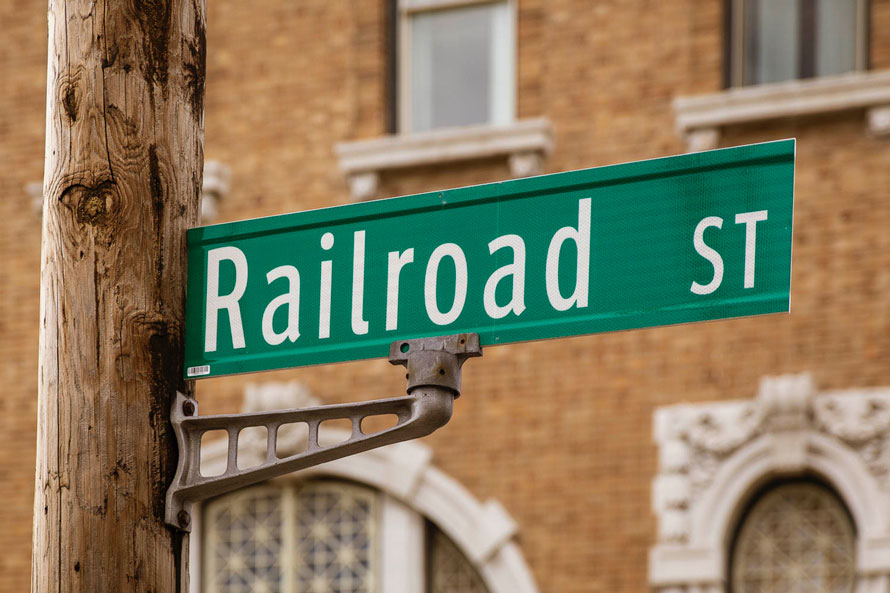
Railroad Street was at one time the center of commerce, and thus one of the most important and well-known places in each community that hosted the road. Whether the road was followed with the suffix of Street, Avenue, Place, Way or Circle, civic boosters took pride when they could add this name onto their local plat. It meant that their community, big or small, had access to that all-important connection to the outside world. For it was from Railroad Street, where people, goods, mail, parcels, and even telegrams could reach beyond the town limits to the outer world.
Here, one generally found the depot, and often a separate freight house. With a connection to markets beyond their own, businesses that depended on economical transportation bought land parcels here to gain access to the tracks. Grain elevators, warehouses, mills, lumber yards, coal and oil dealers, and manufacturers of everything imaginable moved onto Railroad Street.
There are 3,853 known examples of Railroad Street according to the Census Bureau. With the passage of over a century and a half since most of these streets were named, the connectivity and commerce role that the railroad once dominated has diminished. But Railroad Street endures, along with the corridor that hosted the tracks and interdependent businesses. For each of these communities, the corridor is a place in flux. In some, it remains a busy, vital commerce district, with the railroad and its named street in a thriving co-existence. Elsewhere, its meaning is just a vestige of its former role, with the railroad in place, but its connection to the street and community lost and forgotten. In these places, the corridor is a conduit where trains pass through, but seldom stop. And then there are the forlorn places where Railroad Street fronts an abandoned railroad right-of-way. The street name only serves as a marker to a place disconnected from function, but with a heritage worth uncovering.
Sadly, most Railroad Street corridors are now a conduit – a place where trains run through without stopping, void of any economic connection to the road. Most often, the businesses that fronted the railroad have either quite shipping by rail or closed for good. Often, when the railroad lost this commerce connection to the community, it left an empty lot where the station and supporting infrastructure once were. Usually, these lots are never reused, another sign of the community’s economic decline.
Railroad Street can be found in communities coast to coast, but it is in the small farm communities where the road has left its strongest imprint and still has relevance. In the Midwest, hamlets and villages of barely a dozen streets dot the landscape, with Railroad Street still serving the role town boosters intended. In these places, the station has been long gone, but a mill, elevator or fertilizer dealer remain to service the local economy. In these rural communities, the railroad corridor shows us the character of place. Forget Main Street, for it is Railroad Street that carries the heartbeat here. During planting and harvest seasons, we can see the community come alive with commerce and observe the vitality of Railroad Street to the railroad.
In every community with a Railroad Street, a corridor was created that defines a place. With the passage of time, that place has evolved and reflects the evolving economic relationship of the community to the railroad. In some places, that connection prospers, while in others, the railroad corridor is just a conduit to somewhere else. On Railroad Street, we can observe the corridor and discern the railroads relationship to the past and present community.
Hamlet, Indiana – April 2022
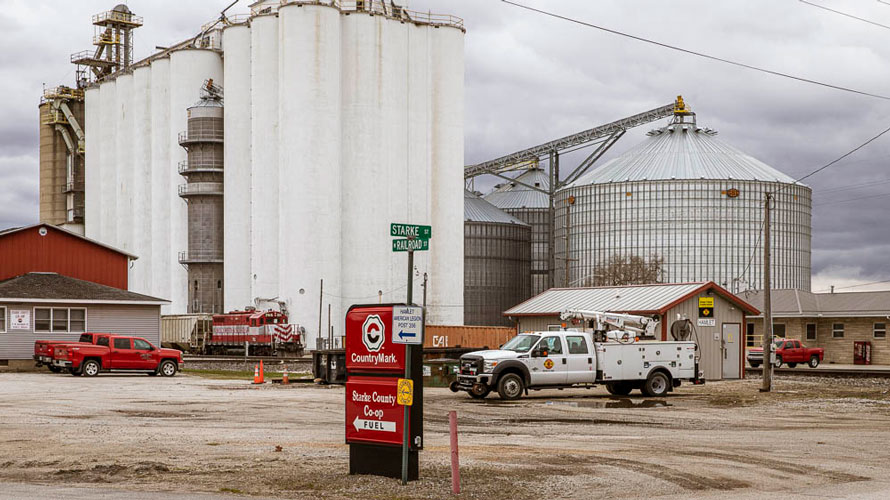
Established in 1863 by John Hamlet, the town grew around the Pennsylvania Railroad mainline between Chicago and Fort Wayne. Railroad Street runs parallel to the tracks, which bisects town. Further down from this corner, the PRR built a depot and a few other structures to support their business. Across the tracks from the depot, the Starke County Co-Op located their growing business. Today, the Chicago, Ft. Wayne, and Eastern Railroad (CFE) operates this line and assigns an engine here to work the co-op. The depot is long gone, but enough railroad related business happens here to warrant a prefabricated structure to serve as a field office.
Hackensack, New Jersey – December 2021
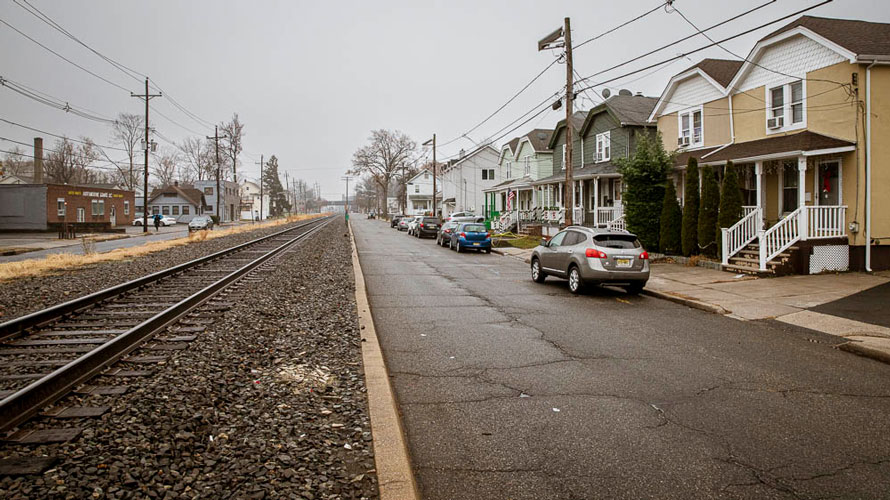
In Hackensack, Railroad Street flanks the New Jersey Transit Passaic Valley line from Hoboken to Spring Valley, New York. This line goes back to 1858 and was a busy Erie Railroad two track commuter line, with station stops about a mile south and half a mile north of this location. Few businesses lined Railroad Street, with single-family homes predominant on both sides of the one-direction street. Homes here are well maintained and residents seem to take the train’s passage in stride. Many residents are rail commuters themselves, utilizing one of the two stations on Railroad Street.
Mifflin, Pennsylvania – April 2019
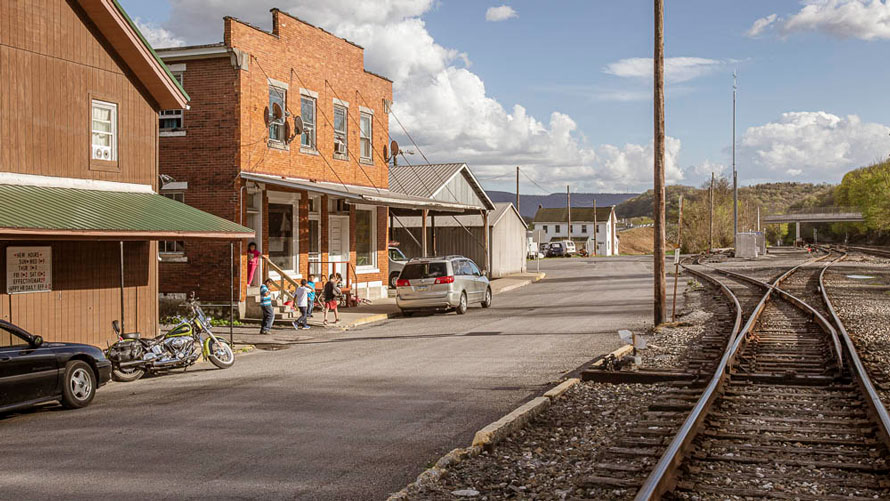
Mifflin was named after the first governor of Pennsylvania, Thomas Mifflin. Originally named Patterson by town planners in 1849, the PRR came built through in 1851 and established yards and a station, which they named Mifflin. The name caused much confusion, leading the town to change its name in 1910 to match the station. That station still exists, and Railroad Street was platted from it to the freight house, which stood at the end of the siding shown here. In addition to the freight house, the spur served the W.S. North Lumber and Coal Company, both of which are long gone. A few other original buildings remain on Railroad Street, including a former hotel and bakery on the left. Norfolk Southern owns the mainline, which is still quite busy with traffic, but few trains stop here.
Lyons, Pennsylvania – June 2019
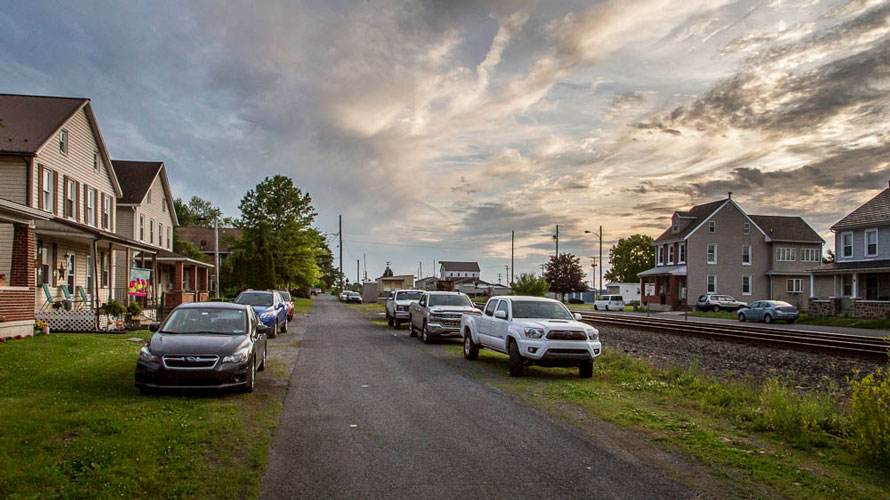
In 1859, the East Pennsylvania Railroad extended to here from Reading and established a station named Lyon. The stop was named for a railroad official, Charles Lyon. The railroad was soon incorporated into the Reading Railroad, to gain access to Allentown and the booming business opportunities there. There are two railroad Streets in Lyons; North Railroad Street, and South Railroad Street, which are one-way streets on opposite sides of the tracks. Small businesses and residences line both streets, which are frequently interrupted by Norfolk Southern trains speeding though on the two-track mainline.
New Holland, Pennsylvania – April 2021
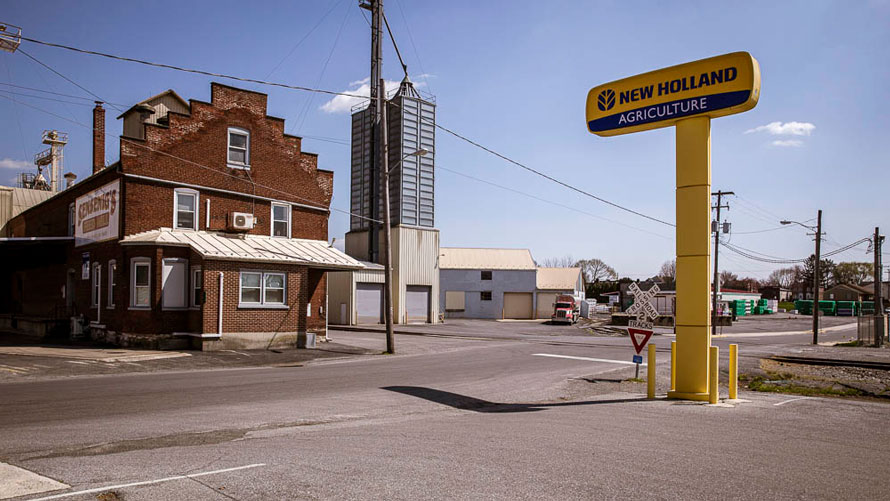
In New Holland, Railroad Avenue runs to the tracks, not adjacent to them, as is generally the case. A freight and passenger station stood where the New Holland sign is presently. A main, passing track, and a leg to a turning wye crossed RR Avenue here. Within the wye, several rail dependent businesses where located, with many active until very recently. This was the Pennsylvania Railroad New Holland Branch, which originally went from Lancaster to Downington, east of here. Most of the line beyond New Holland was abandoned by Penn Central in 1972, but Norfolk Southern maintains enough business on the line to keep crews busy five days a week.
Emmaus, Pennsylvania – June 2019
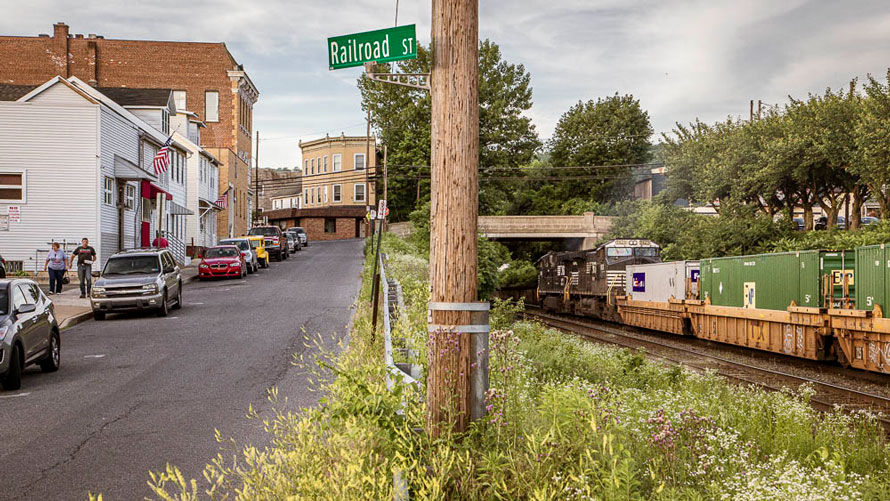
Emmaus, Pennsylvania was founded in 1859, the same year the Philadelphia and Reading Railroad built eastward through here to Allentown. Railroad Street led from an overpass down to trackside, where the railroad located a freight house and a coal and lumber dealer. The Reading placed their depot across the tracks from the freight house, which is still standing, but no longer recognizable for those without a keen eye. Railroad Street is usually busy with foot traffic, with many heading to the Mercantile Club on the left, and a micro-brewery located where the freight house once stood. Norfolk Southern owns this line now, and the double-track mainline still hosts considerable traffic.
Salem, New York – January 2022
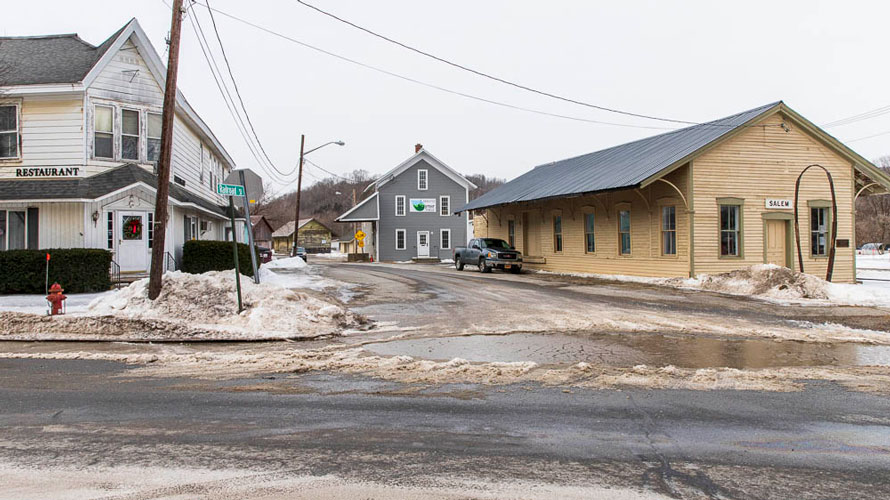
Railroad Street in Salem, New York is one of those places that still fronts track, but no trains. The railroad through here was originally laid by the Rutland & Washington Railroad Co. in 1852, and later absorbed into the Delaware and Hudson Railroad, as the Washington Branch. With traffic waning, the D&H sold the line in 1982 to the start-up Batten Kill Railroad. With Salem maintaining their historic depot and with a thriving walkable tourist district, the Batten Kill ran seasonal excursion trains from here to Shushan. This service ended in 2003, leaving the tracks in place, but dormant. As well as the depot, the ice and freight houses remain in place between the silent tracks and Railroad Street.
Monroeville, Indiana – May 2022
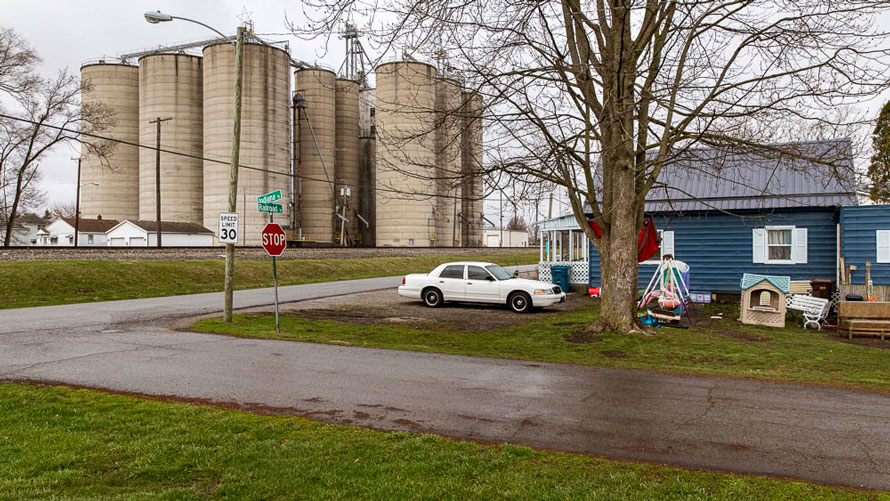
After the Pennsylvania Railroad built through here in 1854, Monroeville was plotted on a grid that aligned the streets with the railroad. Originally, two mainline tracks and a secondary track occupied the right-of-way adjacent to Railroad Street. Railroad Street primarily fronted single-family homes over the years, as the depot and most businesses were located on the other side of the tracks. The depot was removed in 1980 by Conrail and stood approximately where the white garage is situated. Those silos belong to the Trupointe Cooperative, the last active rail customer in town. Apart from this business, trains of the Chicago, Ft. Wayne & Eastern Railroad run through here on a single track next to Railroad Street without stopping.
Dola, Ohio – April 2022
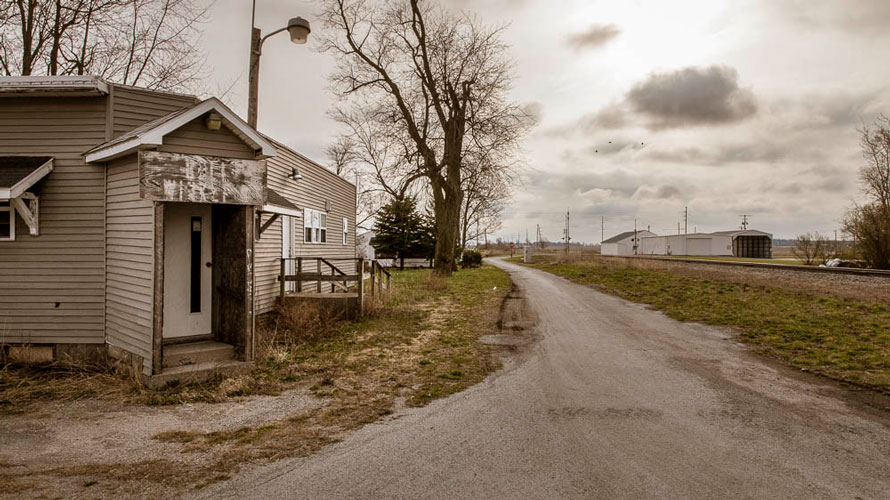
Railroad Street in Dola serves no customers anymore, be they businesses or patrons. Dola was at one time an important refueling place on the former Pennsylvania Railroad mainline between Chicago and Fort Wayne. The right-of-way next to Railroad Street went from two tracks to four here, with each track providing access to a large coal dock positioned over the mainline. The dock and depot were located at the end of Railroad Street, just beyond the crossing in the distance. All this infrastructure was removed at the end of the steam era along with the extra tracks. Never a large town, once the railroad pulled out, it has slowly retrenched to host just a single through line. The town is slowly contracting, as evidenced by the shuttered last bar in town, Bull Winkles.
Sharon, Pennsylvania – April 2022
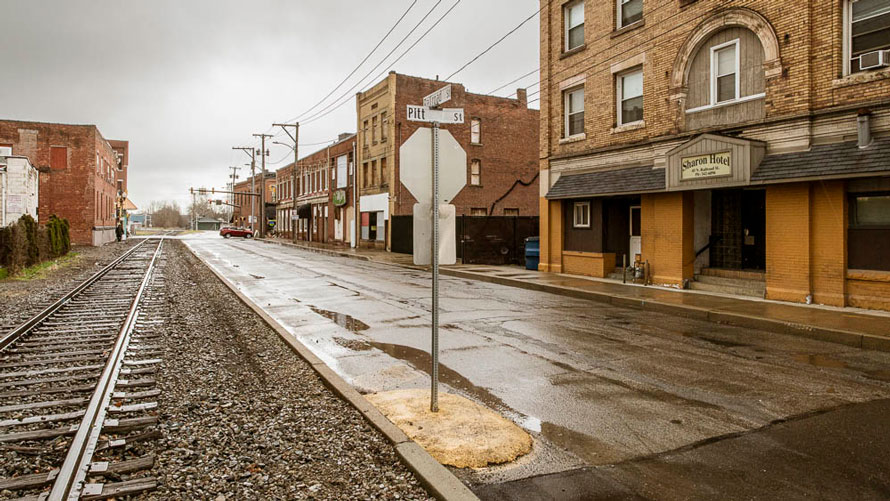
Railroad Street in Sharon runs adjacent to the former Pennsylvania Railroad two-track mainline that passed through the downtown business district. A depot was built at the south end of Railroad Street – the green building at the far end of the street. Pennsy predecessor, Erie and Pittsburg RR, originally built this line to run from New Castle Junction to Erie, serving the steel industry which built heavily in this region. Railroad street was lined with hotels, bars, small businesses, and apartments, most of which still stand and are active. The Erie also came through Sharon on a parallel route, and when Conrail acquired both lines, favored the Erie for through traffic. The former PRR line was downgraded to a single-track dead-end lead to serve several steel finishers and a forge.
Randolph, Vermont – November 2020
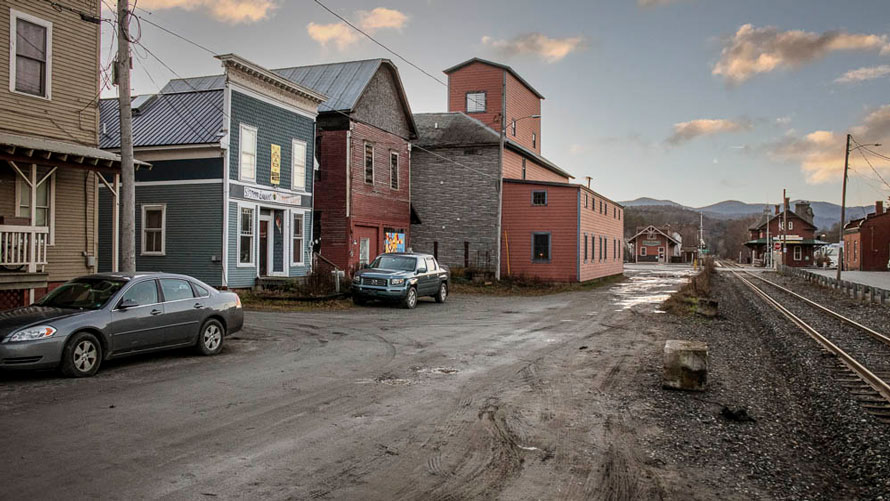
During Randolph’s heyday, three tracks occupied this narrow corridor along with a dirt Railroad Street. Most of the original buildings that fronted the street remain; originally an apartment building, undertaker, marble/granite workshop, and a grist mill. At the end of street stands the Central Vermont Railway freight station and depot, which still serves Amtrak’s daily Vermonter in both directions. The extra tracks through have been removed for there are no longer any active freight customers here for the New England Central Railroad to service. However, Railroad Street still thrives with re-purposed buildings.
Harpster, Ohio – August 2018
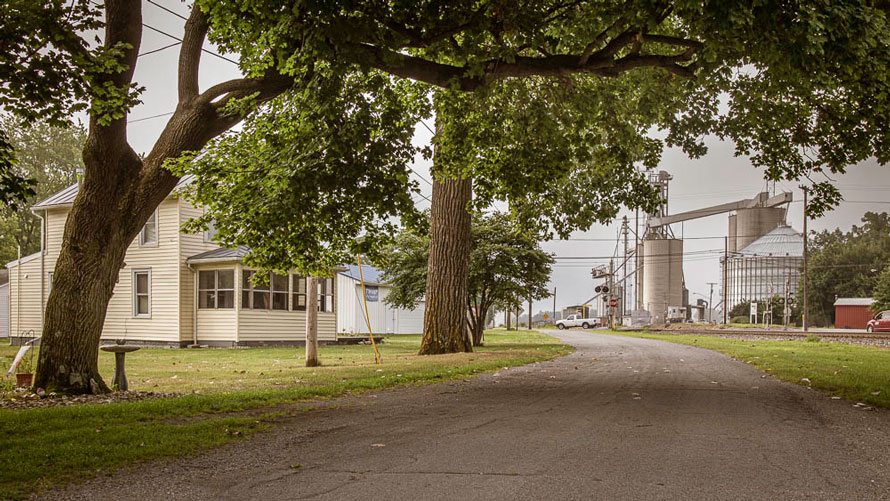
Harpster is one of those small Midwest farmer-based communities built after the coming of the railroad. With less than 100 citizens and not a dozen roads, it does have a Railroad Street. The Toledo & Columbus, a Chesapeake & Ohio predecessor, built a depot in 1918 approximately where the white truck is in the photograph. The station was removed in the early 1980’s, but a large grain elevator, Smithfield Grain, provides an active connection of the community to the railroad.
Paulsboro, New Jersey – December 2019
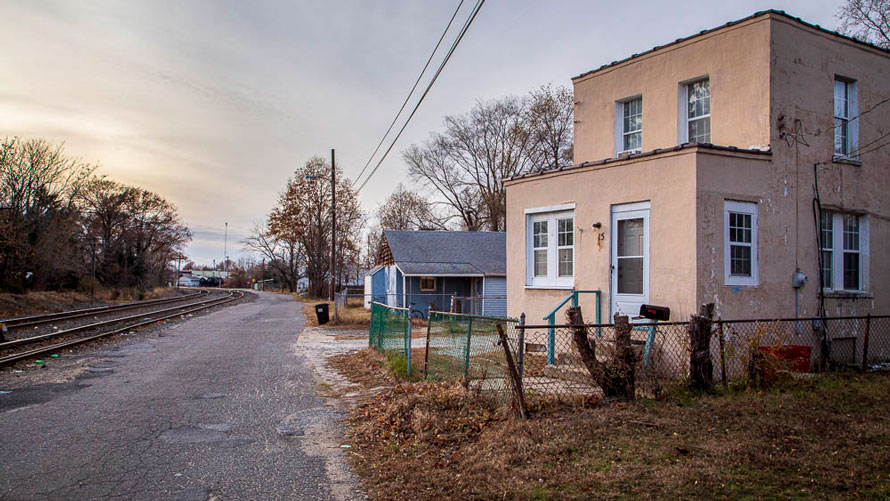
Paulsboro, the self-called “Industrial City”, was planned as an industrial zone away from the established bedroom communities that line the Delaware River. Here, factories, plants, and oil depots found land cheap and accessible to Philadelphia, the river, and the Pennsylvania Railroad. But as is often the case, people want to establish homes near their places of work, and homes sprang up without any zoning guidelines within this industrial sprawl. Railroad Street here is a perfect example, with homes built next to the former PRR double-track industrial line. Conrail Shared Assets operates this line and maintains an engine at the end of the road to serve as a switcher for a large oil depot, hidden by the homes in the foreground.
East Liverpool, Ohio – August 2018
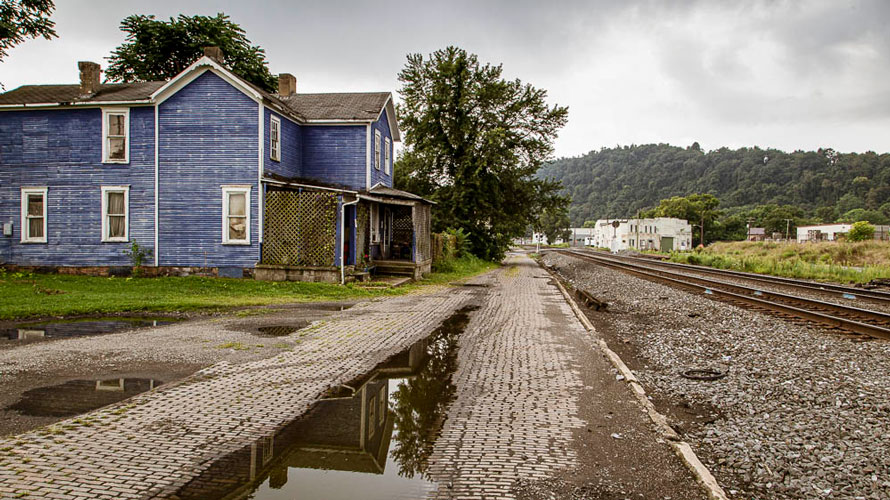
Railroad Street in East Liverpool fronted the tracks of the Pennsylvania Railroad, hosting a mixed neighborhood of businesses and homes. During its heyday, East Liverpool was considered the pottery capital of the United States, and multiple plants lined the tracks here. The vacant lot to the right once hosted such a factory. The pottery business is long gone, leaving Norfolk Southern little reason to stop here. With the loss of manufacturing, Railroad Street is now solely lined with residences and vacant lots.
Charleroi, Pennsylvania – April 2022
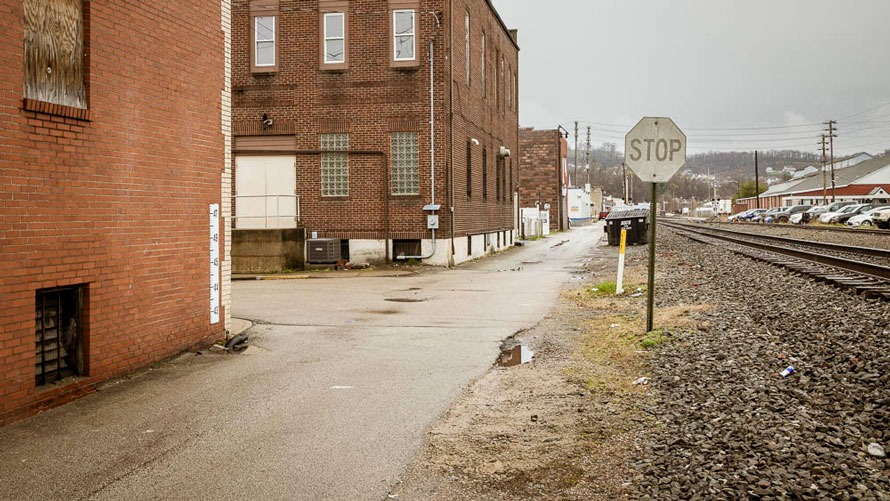
Railroad Way in Charleroi is more of an ally than a street. Just a single main line track of the Norfolk Southern comes through town now, where the Pennsylvania RR once had a 4-track main. Railroad Way used to have a few active customers, but they are gone, which may be partially due to the Monongahela River’s tendency to flood on a frequent basis. A water gauge on the back side of the Masonic Hall building marks the flood level above the river, which is just 100 yards to the right. Flood stage for the river here is 28-feet, but the gauge markings show that the river easily surpasses that mark.
Harrison, New Jersey – July 2018
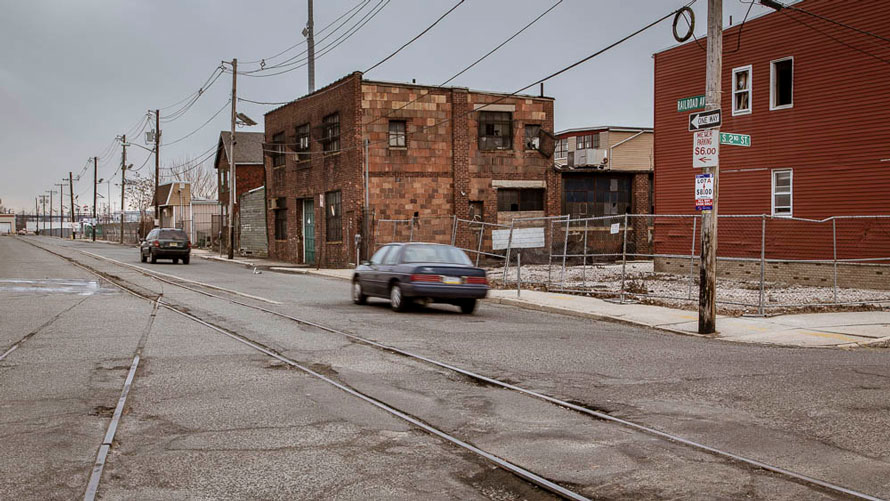
In Harrison, the tracks ran down the center of Railroad Street. The Pennsylvania Railroad diverged off the mainline to tap into the growing industrial area just across the Passaic River from Newark. The town’s official motto was “The Beehive of Industry”, and there was enough rail traffic to warrant the PRR laying two tracks down the street. Like most eastern industrial areas, industry gradually left due to high wages, taxes, and lack of expansion space, leaving vacant buildings and lots. It took a few decades, but new residential buildings are gradually converting this area into a bedroom community, with commuters taking both NJ Transit and PATH into New York. The last active industry pulled out in 2019, leaving a single track in the street, which is slowly being paved over. Soon, only the street signs will tell of the heritage of this place.
Edison, Ohio – August 2018
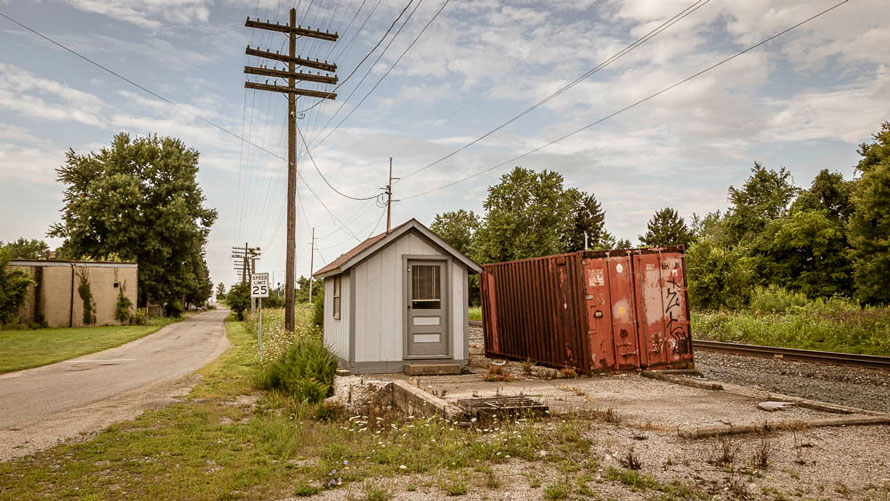
Edison had several other names before residents decided on its current name in 1881. Named after the famous inventor, they plated Railroad Street adjacent to the Cleveland, Cincinnati, Chicago, and St Louis Railway when it came through. A depot was built as was a tower, for the Toledo and Ohio Central soon crossed the line just behind the photographer and established an interchange. Both lines were eventually integrated into the New York Central System, which continued to switch cars here. Edison stayed a small town, with little business and few passengers. The station closed in 1949 and was finally razed in 1966. All that remains of the interchange is a single switch and the depot foundation, currently hosting a small maintenance structure for CSX.
Logan, Montana – March 2021
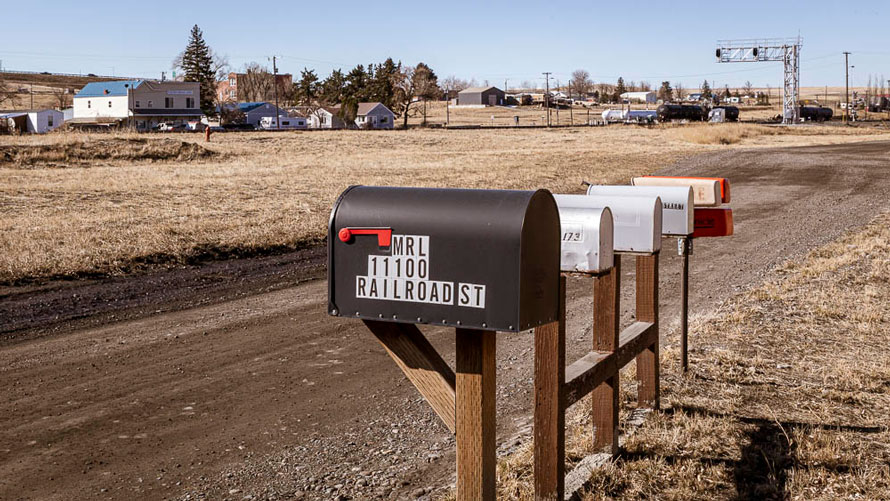
Logan was named after Mrs. Odelia Logan, whom the Northern Pacific Railroad purchased land from in 1883 to establish a junction point and yard, along with a roundhouse and shops. The town was plated in 1893 and prospered under the NP’s tutelage until a fire in 1919 destroyed most of the business district. Even though the NP maintained a significant presence here until the 1930s, the town never fully recovered. Railroad Street was on the opposite side of the business district and separated by a 12-track yard. The road led to the Northern Pacific shop facilities here and was eventually lined with homes of railroad families. The coming of the diesel spelled the end for the shops, which were gradually removed, as was the yard. Montana Rail Link presently operates this line and maintains a small track maintenance and office facility here.
Robertsdale, Pennsylvania – February 2017
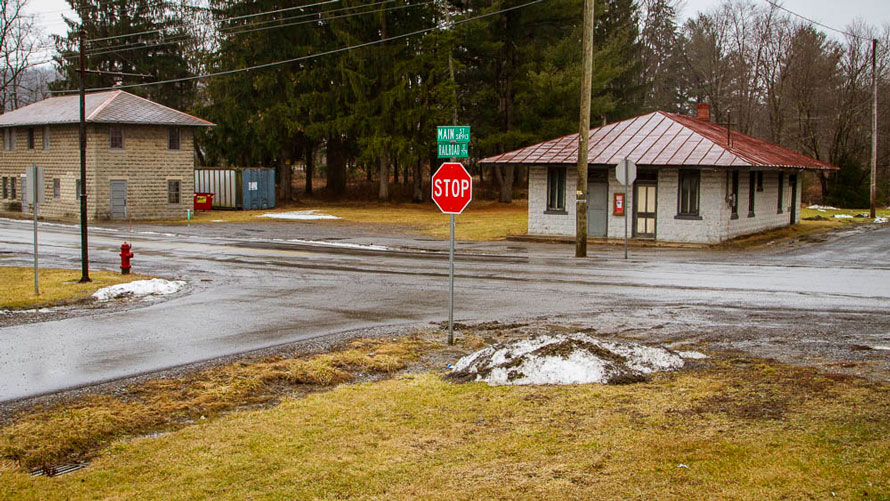
Railroad Street wasn’t limited to just standard gauge railroads, and Robertsdale is a good example. Here the narrow-gauge tracks of the East Broad Top Railroad parallel the street, which ends at the depot. Several tracks crossed Main Street approximately where the fire-hydrant is. The depot served the railroad as an office, station and scale house until the railroad shut down in 1956. The building to the left was once the Rockhill Iron and Coal Company Post Office. Both buildings are now owned by the Friends of the East Broad Top group and open to the public for tours.
Centralia, Washington – July 2019
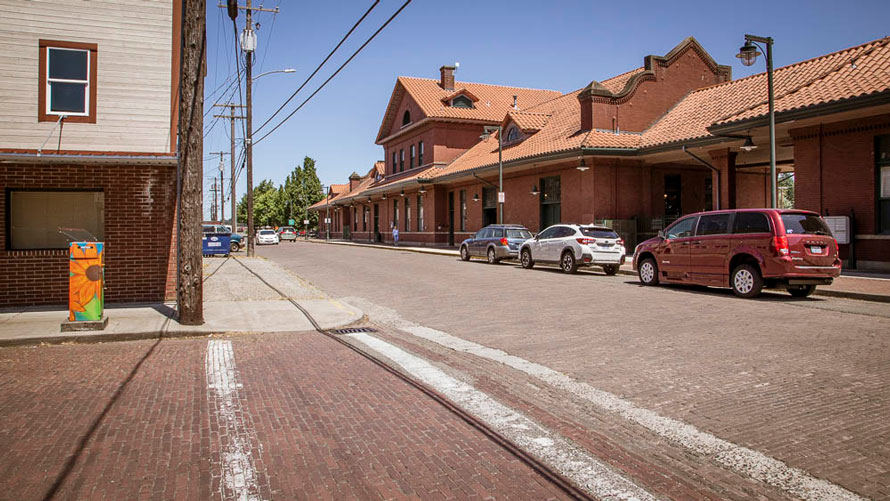
In Centralia, Railroad Avenue paralleled the Northern Pacific tracks, with s depot and yard office located on the street. The current brick building was opened in 1912 and is the third depot built in this location since the NP came through in 1874. Centralia was an important junction for the NP, hence the large and impressive depot, which also served the Union Pacific, whom had trackage rights through here. During the town’s heyday, ten hotels off Railroad Avenue kept travelers warm for the night. Today, the tracks are shared by BNSF and the Union Pacific, with Amtrak’s Cascades service and Coast Starlight stopping here.
Mechanicville, New York – March 2022
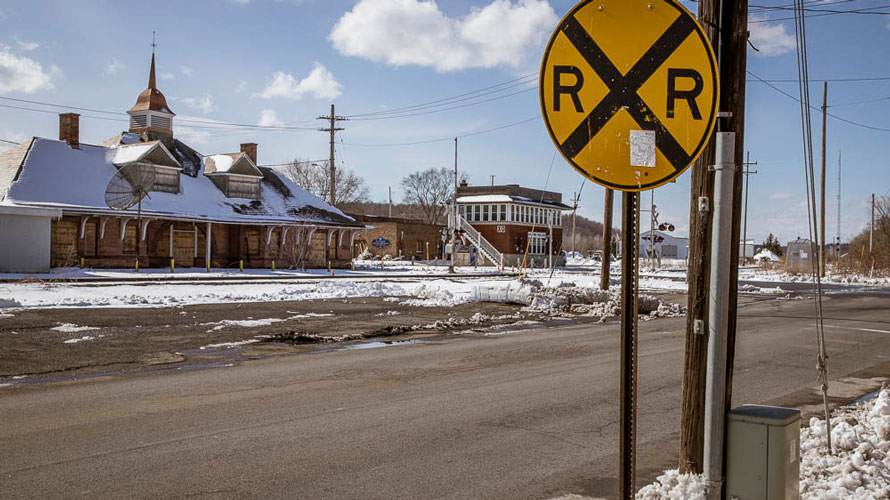
Railroad Street in Mechanicville was mostly bounded by the wye junction of the Delaware & Hudson and Boston & Maine Railroads. The Street ran parallel to the B&M line, crossed their tracks, and eventually ended near the large yard. The D&H depot and XO interlocking tower are across the tracks from Railroad Street, with apartments and single-family homes on the near side. A railroad town, Mechanicville has greatly contracted since the railroads downsized the junction. XO Tower closed in 1971 and the station a decade earlier, but both are currently in various states of restoration by the Mechanicville Heritage Society. Today, both Canadian Pacific and PanAm Railways meet at Railroad Street and continue west into a small interchange yard.
Fonda, New York – October 2020
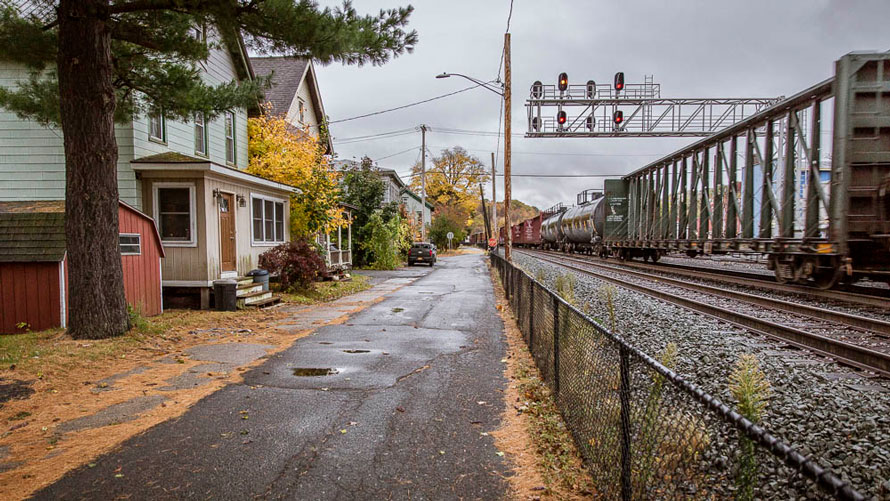
Railroad Street in Fonda faces the former New York Central main line across New York. Always a residential street of homes, it’s hard to image planners today platting a street that fronted the six tracks that the NYC originally had here. Directly across the tracks stood the depot and freight house. The right-of way has narrowed to three-tracks, but current owner CSX, and tenant Amtrak still move a lot of trains through here.
Julian Pennsylvania – May 2016
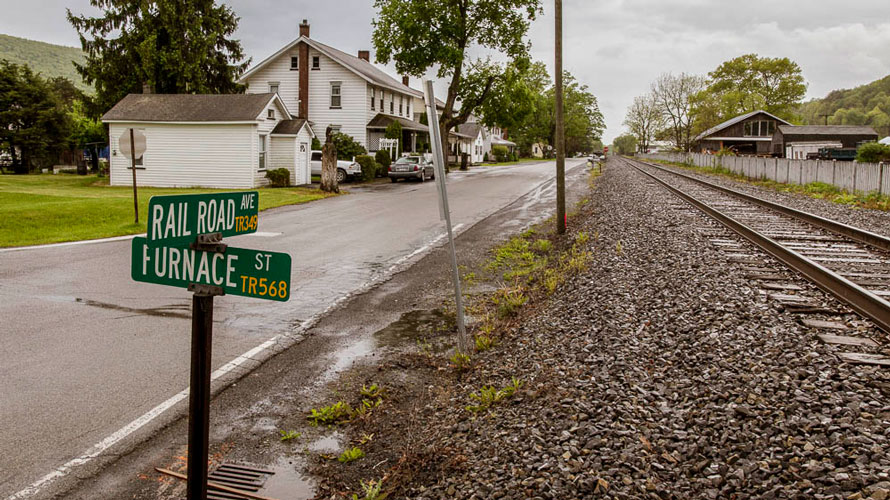
In Julian, Railroad Avenue runs adjacent to the track for about a mile. It was once the main thoroughfare through town but has been by-passed by a new highway. The road hosts homes and small businesses of various sorts. This line was constructed as the Bald Eagle Valley Branch of the Pennsylvania Railroad, which Conrail shed in 1984, allowing a new short-line, Nittany & Bald Eagle Railroad, to take over operations.
Shushan, New York – April 2022
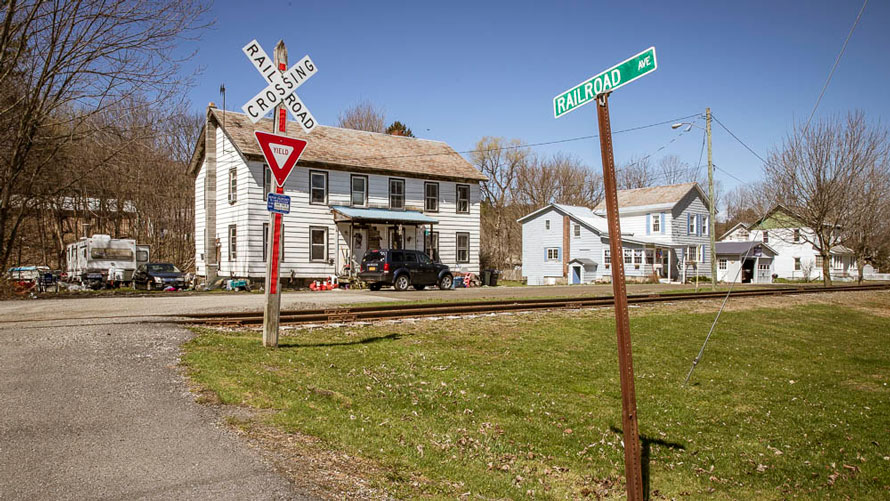
Railroad Avenue in Shushan gets its name from its proximity to the tracks. Void of any business connections to the railroad and hardly an Avenue as hard-packed gravel, the road is strictly residential. The Delaware and Hudson Railroad built a railroad depot and sidings about a half mile south of here. This track is currently owned by the Batten Kill Railroad which passes here just a few times a week.
Cambridge, New York – April 2022
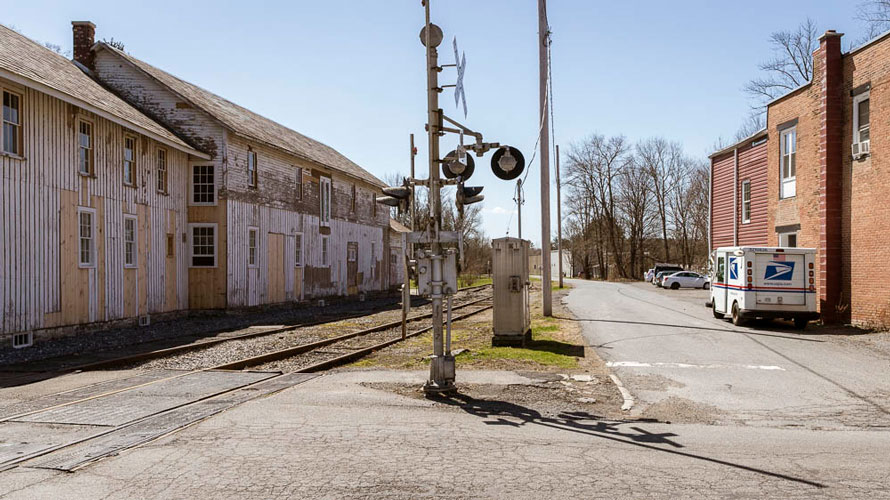
In Cambridge, Railroad Street runs next to the former Delaware and Hudson Railroad tracks through the town’s small business section. The road ran from the depot (behind), south to where a creamery was once located. The building on the left was a lumber dealer, which was served by the siding, along with a few other small warehouses. The Batten Kill runs through here, but there are no active customers left to serve in town.
Mount Bethel, Pennsylvania – November 2017
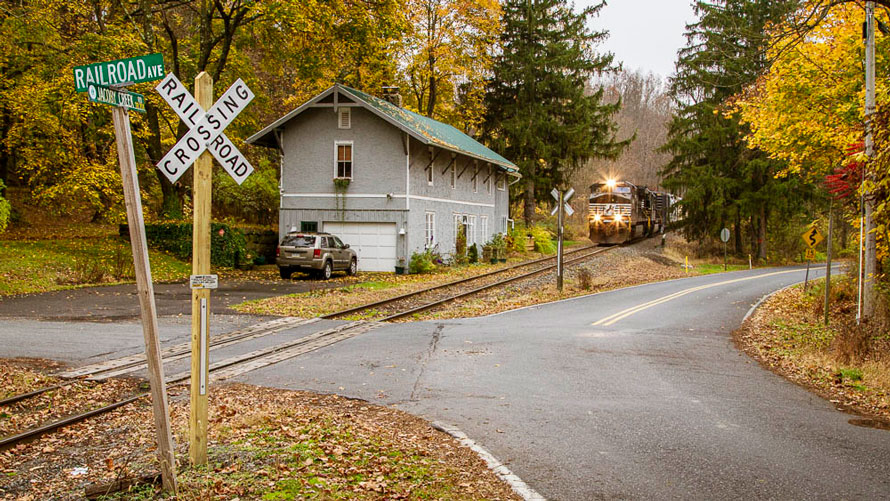
In Mount Bethel, Railroad Avenue takes one from the highway down to the tracks. The depot here was built in 1878 by the Bangor and Portland Railway, which was later incorporated into the DL&W. The depot marked the west end of “Hill Yard” with three tracks that were on top of the grade out of Portland. This yard was used to double and sometimes triple the 3.4% grade that led to Bangor, in the heart of the slate and cement district. Hill Yard was also an interchange point with the Lehigh and New England Railroad, but not much traffic moved between the two. This depot had seen it all and is now a private residence that sees the occasional Norfolk Southern train.
Eric Williams – Photographs and text Copyright 2022
Excellent. What a great collection and fascinating framework for examining the railroad landscape. Kind of inspired to start my own collection.
What a fascinating and creative idea that was very skillfully realized in both words and photographs. I will make a point of visiting Seattle’s Railroad Way South (now rail-less but just a few blocks from the very active King Street Station and BNSF mainline). I will also envy the occupants of the Mount Bethel residence that was once a depot. I have always wanted to live close to a railroad and that would almost be close enough.
Simply beautiful work & writing, I enjoyed this essay handily. Thanks!
Thanks Eric. You’ve no doubt now more than doubled the length of my trips. When I travel, unless it is dark, I stick to the two-lanes and seek out depots as I pass through small town America. I infuriate any passenger accompanying me because when I see a sign that says “Business District — Turn Here,” I turn as directed. If there’s a depot left standing, it will be in the heart of town. Now, as your essay here makes clear, the Railroad Avenues of these towns are just as likely to be elsewhere as they are to be alongside community depots. And given how unfamiliar many of today’s locals are with their community’s railroad heritage, it’s likely to be difficult to get an accurate answer to the question, “Is there a Railroad Avenue here? If so, where is it?” You may very well have had that problem assembling this fine essay.
Interesting survey of something I’d bet most of us have never considered. As a companion piece, maybe check out places with Railroad Streets that front abandoned rail lines, but where you can still see evidence of track or facilities-stations, freight houses, grain elevators, etc. Not a good example, but the larger view-I don’t have an image handy for it-shows a feed dealer next to an empty right of way that was Erie Lackawanna prior to 1976 in Uniondale Ind.
http://www.rrpicturearchives.net/showPicture.aspx?id=5193084
A couple of nit picks, if I may: The town in Pennsylvania on the New Holland Branch is Downingtown-not Downington. Downingtown was once, and may still be, something of a tourist destination, and was home to the Downingtown Inn, which Mickey Rooney had an interest in.
Also, the line in Hackensack is the Pascack Valley Line-not Passaic, though the Passaic River is not far from there. The line takes its name from Pascack Brook, which flows from NY state into New Jersey, eventually emptying into Oradell Reservoir, from which flows the Hackensack River. The railroad there was the New Jersey & New York, which became part of the Erie, and later Erie Lackawanna, then Conrail. It is now served for what freight there is by CSX.
Tom, thanks for your comments and corrections – always appreciated! I do seek out Railroad Street where ever they may be, and do find the ones that front abandoned lines to be of unique interest. I do have several good examples, but not every location makes an interesting picture. I probably have about 50ish locations shoot now, but only submitted ones that I thought were somewhat visually engaging. Additional locations are on my personal website – http://www.ericwilliams.photography
Shushan Great story and pictures! Interesting how you seemed to make a point of taking them not on picture perfect days! Many during mud season. I just returned from a fishing trip with some side trips with my wife and came across Shushan station that has a diesel and caboose parked in the siding. I did not take notice to the railroad crossing name. If you want to have those pictures contact me through Edd.
Most welcome, Eric. I’m from the northeast, and have some familiarity with a number of the places you highlighted in your excellent essay. I’m particularly familiar with the Pascack Valley Line, as my brother lives in Haworth NJ, the next town over from Oradell, which is on that line, near the Reservoir.
Very nice work Eric. I think I’ll pay a bit more attention to the ” railroad streets” that I find in my travels.
Excellent piece, Eric. How many of us have been on Railroad Street but weren’t enlightened enough to use it as a focus. Well done.
Kevin S and Kevin T, thanks so much! This project came about over time and evolved as many of these have a tendency to do. When I travel, I’ve always tried to take the old highway into these small towns to see what I could find of interest that was adjacent to the tracks. Every once in a while, I would note that the street was called Railroad, but I thought of it as just a cool coincidence. After more than a few of these happenstance finds (which I did not initially photograph), I started looking for them as I traveled, and later on made them my target for places that I would stop. Not every one is interesting or makes for an interesting picture, but I’ve been to about 70-80 Railroad named streets so far.
Wonderful and engaging writing to go along with these quiet and thoughtfully composed images. I appreciate the railroad presence Eric is able to capture often without trains and in some cases without tracks.
These are fantastic, Eric! What a great photo essay and a great tour through railroad America.
The Erie track through Hackettstown, New Jersey is the Pascack Valley Line, not the Passaic Valley Line.
David, thanks for the correction. I’ve had a few people note that!
Great writing. Danville, PA has a Railroad Street leading down to the tracks and a D L & W St. parallel to the tracks, on the East side of the Susquehanna River. On the West side of the river the Pennsylvania RR ran through West Danville (now Riverside). This track is now Norfolk and Southern while a short line runs for 40 miles on the East side of the river from Northumberland to Berwick nuclear power plant.
James, thank you! Next time I travel taht way, I will check out the streets of Danville. I also photograph the streets named for railroads, and have a photo collection of a dozen or so.